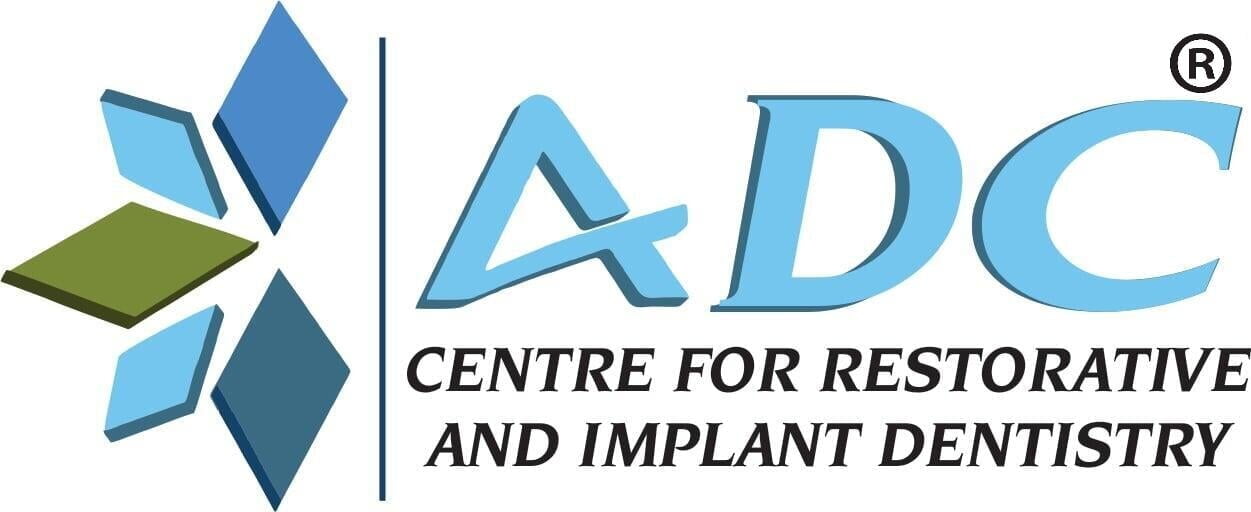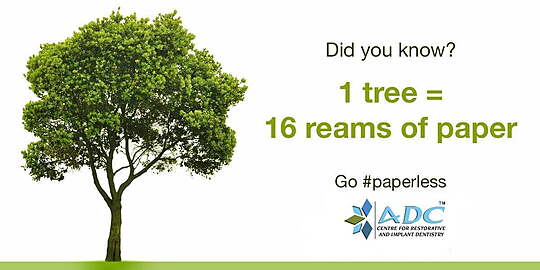The replacement or repair of teeth is the aim of dental restoration. The main goal of dental restorations is to improve dental health and chewing ability. After obtaining dental restorations like fillings, implants, crowns, or root canals, it's important to follow any aftercare guidelines given by the dentist.
The replacement or repair of teeth is the aim of dental restoration. The main goal of dental restorations is to improve dental health and chewing ability. After obtaining dental restorations like fillings, implants, crowns, or root canals, it's important to follow any aftercare guidelines given by the dentist.
Everyone makes an effort to maintain good oral hygiene to prevent the need for tooth restoration, yet, procedures like fillings or crowns are becoming more common. Instead of just pulling the tooth, you can extend its life by getting a restoration. The very last resort for any dental issue should be tooth extraction.
- The first 12 to 24 hours following any procedure will be slightly uncomfortable and sensitive.
- Following surgery, the gums may be sore for one or two days, and swelling and minimal bleeding are typical.
If any of these symptoms linger, talk to your dentist. You can prevent gum disease and hasten the healing process by gently cleaning and flossing the recovered tooth and its environs.
Dental restoration care: What is it?
Dental restoration care: What is it?
The goal of dental restoration is to replace or restore teeth. Enhancing dental health and chewing function is the primary objective of dental restorations. General dentists practise restorative dentistry, also referred to as family dentists. Crowns, bridges, implants, and dentures are some examples of dental restoration.
Who requires dental restoration?
You could require restorative dental care if you:
- Have dental decay/cavities
- Teeth that have been damaged or fractured.
- Have missing teeth
You may need dental fillings, crowns, dentures, tooth extractions, root canals, or gum surgery to restore a tooth. Following any aftercare instructions provided by the dentist is crucial after receiving dental restorations such as fillings, implants, crowns, or root canals. Doing so will prevent injury to the repair and the mouth. Additionally, it can promote speedy and thorough healing of the mouth. Dental experts frequently give the following advice.
How to take care of mouth after a Dental Restoration?
Pay attention to the mouth, especially in the initial days following a dental restoration. By using these suggestions, you can hasten the mouth's normal healing.
- Avoid chewing on meals that are hard or sticky.
Excessive consumption of tough or sticky foods can weaken or harm teeth. Even the healthiest teeth can have difficulty with the following foods:
- Seeds and nuts
- Chewy candy
- Fresh carrots
- Popcorn
These foods may be more likely to harm teeth still healing from dental restorations. Even when the restoration is healed, eat slowly to avoid a filling coming out or a crown breaking.
Change unhealthy behaviours like teeth grinding
Unconscious habits like teeth-clenching or grinding can cause a filling to come out or crack and veneers or a crown to become damaged. If the habit is severe, wearing a mouthguard at night or even during the day might stop teeth and restorations from ageing more quickly than is necessary. Wearing a mouthguard when engaging in contact sports or other activities that could cause oral trauma may also be useful
Maintain good dental hygiene
The mouth can be particularly sensitive to microorganisms during restoration operations since they can be at least somewhat invasive. Skipping flossing or brushing following treatment can be tempting, particularly if the mouth is uncomfortable. But doing so could let bacteria enter the mouth and gums, leading to infection or even inflammation. After restoration, maintaining excellent oral hygiene can hasten the healing process.
Try using a different part of your mouth to chew
The teeth and gums are under pressure as you chew. Applying pressure to that mouth area after a dental operation may feel painful and place an unneeded amount of strain on a fresh restoration. Putting too much pressure in that place could affect how it heals, particularly when a filling, implant, or other treatment is still new. It can make it heal slowly or ineffectively. To ensure proper healing after dental work, try to avoid chewing with treated teeth.
You can follow various aftercare procedures, but fortunately for you, we've outlined the finest ones below.
Anaesthetic
You will be given some anaesthetic during the majority, if not all, tooth repair procedures. This is done to numb the area that is being treated around it. Depending on the anaesthetic, your mouth will likely remain numb for a few hours following surgery. This might lead to several issues, including:
- Your cheeks will be numb, which may feel strange. It's crucial to avoid biting the inside of your cheeks since they protect the tooth that has been replaced.
- It can be challenging to feel temperature changes when your mouth is numb. You risk burning your mouth if you eat or drink anything really hot.
Drinks & Food
It may be challenging to chew because your mouth will likely be uncomfortable or sensitive following the tooth replacement procedure, making it more difficult. Many foods should be avoided to aid with mouth healing. Following are some recommendations:
- Everything Sticky: Avoid eating sticky foods since they can tug on fresh fillings or crowns in your teeth. You might be thinking about caramel, toffee, or chewing gum, but you should also steer clear of dates, hard candies with a lot of stickiness, and sticky sweet ribs since it can be challenging to get the sticky tack off your teeth when your mouth is already hurting.
- Spicier foods: It's best to avoid extremely spicy foods when your mouth is healing from an anaesthetic because the numbness may still be there. If you are not used to eating spicy food, eating spicy meals may give you unanticipated pain.
- Ice: However, avoid chewing on the ice as it will harm the new dental fillings and crowns. Drinking something cold can be soothing and help reduce pain in your rebuilt tooth. Ice-cold beverages are comforting, but be careful when using ice straight to a newly restored tooth, as it might create sharp pain.
- Fizzy beverages - Ensure you drink lots of water and avoid carbonated beverages. They have a lot of sugar, which isn't the healthiest thing to put around a tooth that is recovering.
- Alcoholic beverages: Because alcohol contains a lot of sugar, it should also be avoided for at least 24 hours after surgery.
- All Soft Things - You may be wondering what you can eat. Avoiding meals for as long as feasible when attempting to heal a restoration is highly recommended. Your dentist will give you more detailed instructions on when you can eat based on the restoration. Keep it soft with soup, yoghurt, milkshakes, smoothies, soft sandwiches, and ice cream.
The Do’s of Tooth Restoration
The Do’s of Tooth Restoration
- Take pain relievers – If you encounter pain, taking painkillers will provide you with temporary respite.
- Take Prescribed Medication - Follow your dentist's instructions while taking any prescription drugs.
- Maintain a Healthy Diet - Try to maintain a balanced diet, even though it may be challenging. Eating soft foods might be challenging to eat healthily when you have to eat soft foods until your swelling decreases.
- Limit Hard and Tough Chewing - You might notice that chewing on the side of your mouth opposite where a restoration has been made is easier! Food is less likely to become stuck around your delicate gums if you do this.
- Make use of a salt rinse - After surgery, try rinsing with salt for 24 to 48 hours; this will aid in healing the surgical site.
- Gently Brush - After cleaning your teeth for a few days, be careful to resume regular brushing, including flossing, a few days later.
- Lie upright to sleep: Try to sleep with your head up to reduce pressure on your jaw, teeth, and head.
- Utilize a Cooling Patch: Apply a cooling patch or cold compress on your face for 20 minutes, then remove it and rest for 10 minutes.
- If there is bleeding, apply pressure: After tooth extraction, apply pressure to the gauze pad for an hour. If bleeding is still present, use fresh gauze and apply pressure for an additional 45 minutes. After that, contact your dentist if the bleeding doesn't stop.
Does the restoration need to be replaced?
After three to five years, the restored tooth seems different from the surrounding teeth and loses its original appearance. The natural shrinkage of the material that also occurs creates a distinct border between the tooth and the extended area. As a result, the restoration needs to be replaced. The technique for replacement, dietary limitations, and cleanliness advice are all the same as for the first recovery.
Conclusion
Your smile may look more consistent after tooth restoration. Additionally, it can bring back each tooth's normal functionality, facilitating chewing and speaking. Moreover, after receiving any tooth restoration, it's important to take good care of your teeth to ensure a successful surgery and a quick recovery. Taking appropriate care of the teeth following treatment can be a great method to protect the investment and ensure that the restorations endure as long as feasible when time and money are invested in oral improvements.
Join the movement #paperless
Going Paperless can help save the Earth from climate change and biodiversity loss. It is a big task, but we know we can do it together. Get Help in going Paperless.
Medical Disclaimer:
The content of ADC-Centre for Restorative and Implant Dentistry's Blog/website is for information only, not advice or guarantee of any outcome. Information is gathered and shared from reputable sources; however, ADC-Centre for Restorative and Implant Dentistry is not responsible for errors or omissions in reporting or explanation. No individuals, including those under our active care, should use the information, resources or tools contained within to self-diagnosis or self-treat any health-related condition. ADC-Centre for Restorative and Implant Dentistry gives no assurance or warranty regarding the accuracy, timeliness or applicability or the content.
ADC-Centre for Restorative and Implant Dentistry accepts no liability for errors, inaccuracies, omission, or misleading statements. ADC-Centre for Restorative and Implant Dentistry excludes liability for any losses, demands, claims or damages of any kind regarding information, content, or services at this blog/website. The information may be updated at any time, especially as medical/dental discoveries and research evolves regarding the dentistry and its conditions. At no time does ADC-Centre for Restorative and Implant Dentistry take any responsibility for any action taken or care chosen in reliance on information contained in this blog or this website.















